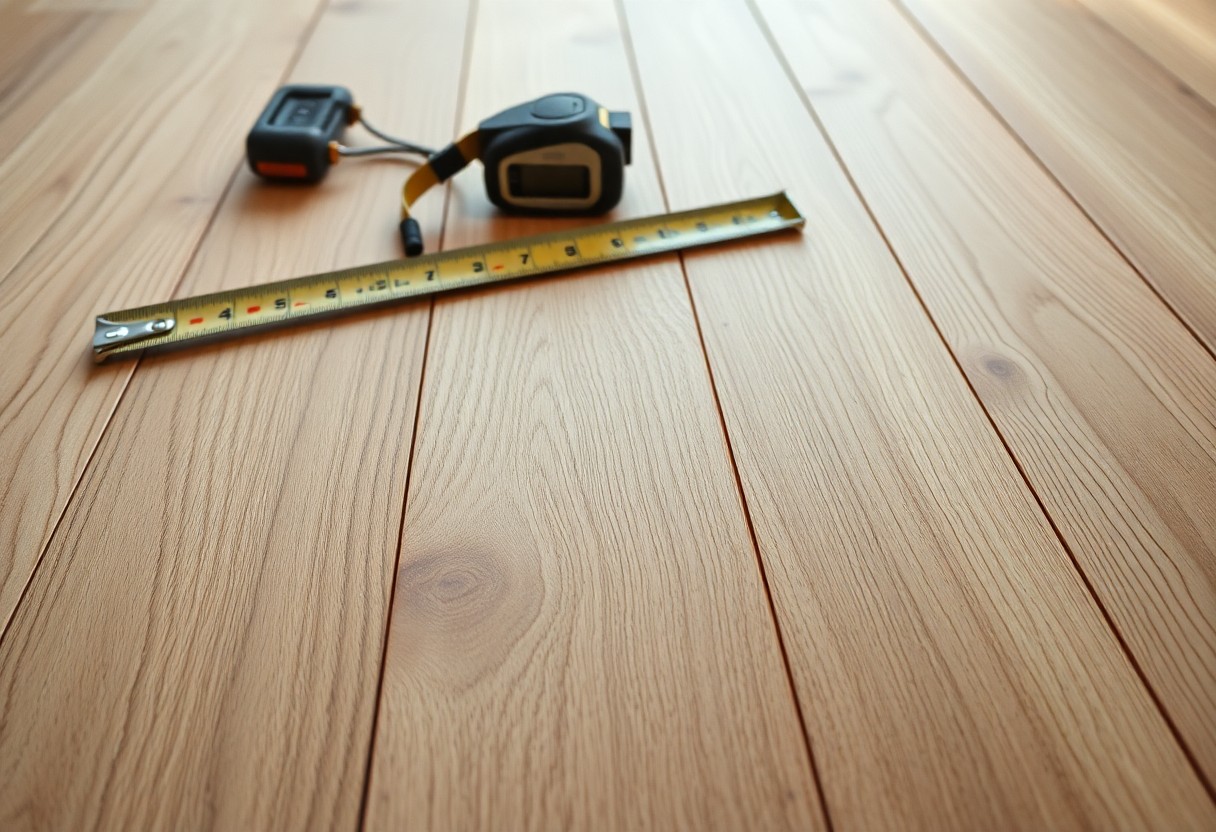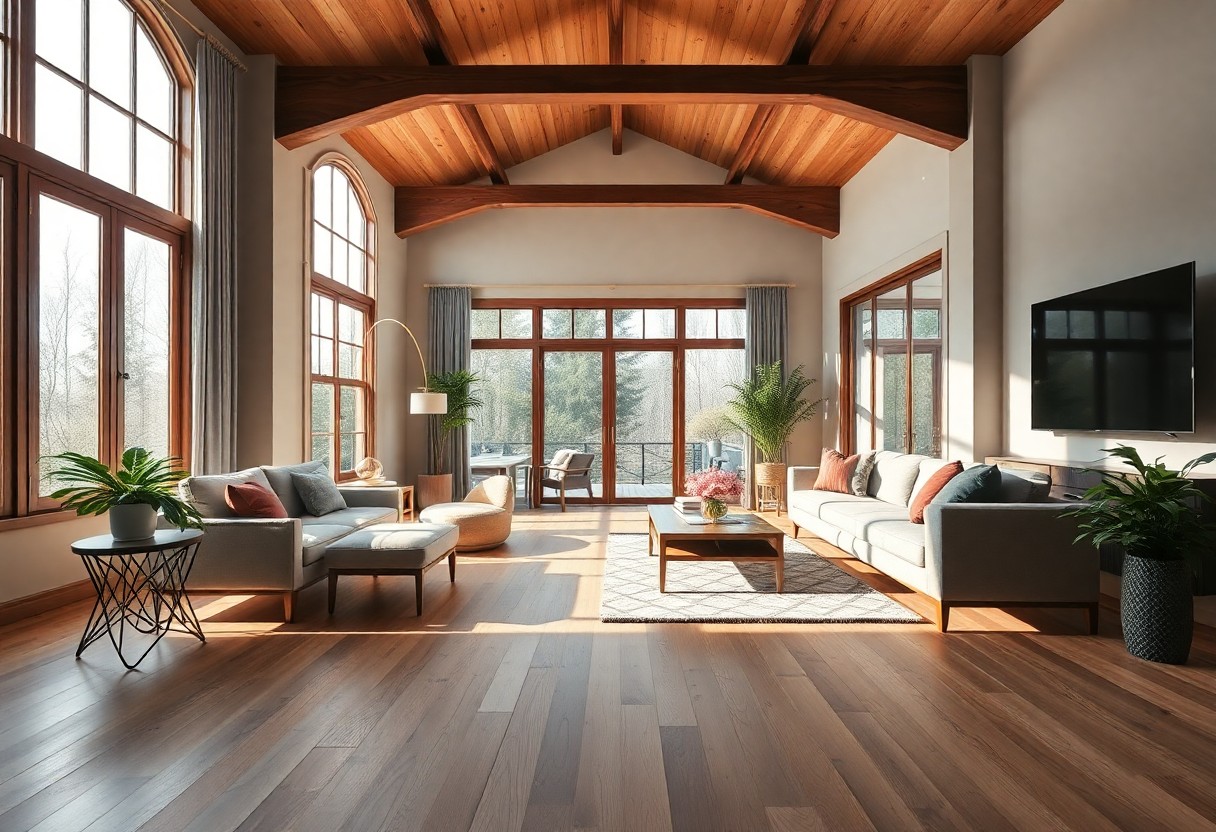Flooring choice plays a significant role in defining the aesthetic and functionality of your home. In the context of selecting the perfect hardwood, white oak stands out for its timeless appeal and durability. In this guide, you will learn about the various styles available, the numerous benefits white oak flooring offers, and important installation tips to ensure a smooth and successful project. Empower yourself with the knowledge to transform your living space with this beautiful and resilient option.
The Aesthetic Allure of White Oak Flooring
White oak flooring stands out for its timeless beauty and natural elegance, seamlessly enhancing your home’s ambiance. Its warm undertones and sophisticated finish enrich any room, making it a beloved choice for homeowners. The distinct character of white oak not only adds visual depth, but also creates a welcoming atmosphere that invites both relaxation and stylish gatherings.
Unique Grain Patterns and Colors
The grain patterns found in white oak flooring are varied and captivating, showcasing unique characteristics that give each plank its individuality. From subtle, straight lines to more pronounced, swirling patterns, the natural design adds texture and interest to your floors. Additionally, its color can range from light beige to medium brown with hints of gray, offering versatile options to complement different aesthetics.
Complementing Various Interior Styles
White oak flooring elegantly bridges the gap between traditional and modern design, making it suitable for a wide array of interior styles. Whether your home features rustic beams or sleek, contemporary furnishings, white oak fulfills the role of a neutral foundation that ties diverse elements together. With its adaptable look, you can easily incorporate both vintage and minimalist decor, allowing your space to flourish with personality.
This versatility allows you to experiment with color palettes and accents without clashing. For instance, in a coastal-inspired home, the light tones of white oak can mimic sand, while in a modern urban apartment, the deeper hues enhance bold architectural features. From farmhouse charm to industrial chic, white oak flooring acts as a unifying element that maintains the flow of your interior design vision.
The Enduring Advantages of White Oak
White oak flooring offers an exceptional blend of style and functionality, making it a wise investment for your home. Its rich character and impressive durability ensure that it not only enhances your interior but also withstands the test of time. The growing popularity of this hardwood speaks to its versatility, seamlessly adapting to various design themes from rustic to modern, thus serving as a lasting foundation for your aesthetic vision.
Durability and Longevity
Renowned for its strength and resilience, white oak flooring can endure heavy foot traffic without compromising its integrity. With a Janka hardness rating of about 1,360, it stands up well against dents and scratches, making it an ideal choice for busy families and pets. When properly maintained, you can expect your white oak floors to last for several decades, preserving their beauty and functionality for years to come.
Sustainability and Eco-Friendliness
Choosing white oak flooring contributes positively to the environment. This hardwood is sourced from sustainable forests, making it a responsible choice for eco-conscious homeowners. Its renewability, coupled with its long lifespan, translates to reduced waste and the conservation of resources over time.
White oak’s sustainability is enhanced by the fact that it grows relatively abundantly in North America, ensuring that harvesting this wood doesn’t contribute significantly to deforestation. Many manufacturers emphasize responsible forestry practices, often obtaining certifications from reputable organizations that guarantee environmentally friendly operations. Opting for white oak not only elevates your home’s aesthetics but also supports sustainable practices, giving you peace of mind that your flooring choice is a step toward a healthier planet.

Pricing Insight: The Financial Considerations
Understanding the costs associated with white oak flooring is necessary for making a well-informed decision. You’ll find that pricing can vary significantly based on factors like quality, finish, and installation options. Investing in top-quality materials might seem steep upfront, but the long-term benefits could save you money on repairs and refinishing.
Factors Impacting Cost per Square Foot
Several elements influence the price of white oak flooring per square foot, including:
- Grade of the wood (select, rustic, etc.)
- Thickness and width of the planks
- Finish type (pre-finished vs. site-finished)
- Region and supplier pricing
Assume that additional costs like taxes and shipping fees can also affect your final budget, so plan accordingly.
Budgeting for Installation Versus DIY
Installation costs can significantly affect your overall expenditure. While hiring a professional ensures a polished finish, the DIY route could save you a considerable amount. However, if you opt to go the DIY path, be prepared for the hidden costs associated with tools and potential mistakes during the installation process. Balancing these factors is vital to stay within your budget.
Hiring a professional contractor may range from $3 to $8 per square foot for installation alone, whereas completing the project yourself could cost closer to $1 to $3 per square foot—excluding any tools or materials you don’t have on hand. Weighing your skill level against the potential for mistakes will help you determine the best financial strategy for your flooring project. Ultimately, the choice between DIY and professional installation should align with your budget and confidence in handling such tasks.
Installing White Oak Flooring Like a Pro
Achieving a flawless installation of white oak flooring elevates your home’s aesthetic while ensuring durability. With the right preparation and a step-by-step approach, you can navigate this process like a seasoned professional. Understanding the need for a clean, dry subfloor and employing techniques that promote longevity will guarantee that your investment pays off in both beauty and functionality.
Preparation and Subfloor Requirements
Before laying your white oak flooring, ensure your subfloor is clean, dry, and structurally sound. Wood subfloors should be made from tongue-and-groove plywood or OSB, which must be properly installed to minimize movement. Aim for a relative humidity level between 30-50% in your home, and allow your flooring to acclimate in the room it will be installed for at least 72 hours prior, ensuring that it adjusts to temperature and moisture levels.
Step-by-Step Installation Guide
A structured approach can simplify your white oak flooring installation. Begin with the necessary tools and materials, and follow a systematic series of steps to ensure a smooth process. The guide below outlines an effective method to help you achieve the desired results.
| 1. Gather your tools and materials | Hammer, nails or staples, flooring adhesive, saws, and a moisture barrier. |
| 2. Prepare the subfloor | Ensure it is clean, level, and dry; make repairs as needed. |
| 3. Acclimate the flooring | Let the white oak planks sit in the installation area for 72 hours. |
| 4. Lay the first row | Start from the longest wall, ensuring the edges are aligned. |
| 5. Continue laying rows | Stagger the joints by using leftover pieces to enhance stability. |
| 6. Finish the installation | Install transition strips and apply a sealant for added protection. |
The steps above can help you achieve a professional finish. By gathering all necessary materials beforehand and meticulously preparing your work area, you reduce the chances of costly mistakes. Furthermore, staggering your seams as you lay the flooring not only adds visual interest but also strengthens the overall structure. Each plank should fit snugly next to the other without gaps, creating a seamless look that displays the natural beauty of white oak.
| 1. Gather your tools | Key items include a miter saw, flooring nailer, tapping block, and measuring tape. |
| 2. Subfloor preparation | A thorough inspection for any protruding nails or uneven spots is important. |
| 3. Acclimation process | Proper acclimation can prevent future buckling or warping of the wood. |
| 4. Laying the first few rows | Use spacers to maintain expansion gaps near walls or fixed objects. |
| 5. Install the remaining planks | Use a rubber mallet to ensure tight fits, leveraging the tapping block as necessary. |
| 6. Final touches | Seal along the edges to shield wood from moisture ingress. |
Maintenance Strategies for Lasting Beauty
To ensure your white oak flooring maintains its stunning appearance over time, a consistent maintenance routine is crucial. Regular cleaning, combined with protective measures, can greatly extend the life of your floor and preserve its natural beauty. By implementing these strategies, you can enjoy the warmth and elegance of white oak for many years to come.
Cleaning Methods and Products
For everyday cleaning, use a soft-bristle broom or a vacuum with a hardwood setting to remove dirt and dust without scratching the surface. For deeper cleans, a damp mop and a pH-neutral cleaner specifically designed for hardwood floors work wonders. Avoid harsh chemicals and excessive water that can damage the finish and wood over time.
Long-Term Care Tips to Prevent Damage
Protecting your white oak flooring from potential damage involves a few preventive measures. Place felt pads under furniture to prevent scratches and avoid wearing high-heeled shoes on your floors. Keeping humidity levels between 30-50% aids in preventing wood warping or cracking. Regularly check for signs of wear and apply a fresh protective coat of finish every few years.
- Place area rugs in high-traffic zones.
- Wipe up spills immediately to prevent staining.
- Avoid sliding heavy furniture.
- Use a humidifier during dry seasons.
- Polish your floors with a suitable product to enhance luster.
Knowing these tips can help you maintain the integrity of your beautiful flooring.
Additionally, implementing long-term care routines will fortify your floors against everyday wear. Frequent inspections for any unevenness or scratches can catch potential issues before they escalate. Invest in professional refinishing every 5-7 years to restore surfaces and keep them looking new. Protect your investment by using proper cleaning supplies and techniques designed for hardwood floors.
- Assist with regular floor maintenance and periodic refinishing.
- Store cleaning tools in a cool, dry place.
- Avoid using rubber-backed mats that may trap moisture.
- Encourage family members to be mindful of the flooring.
- Seek out expert advice for specific concerns.
Knowing these practices will help you create a lasting beauty that you and your family can cherish.
Final Words
From above, you now have a comprehensive understanding of how to choose white oak flooring for your home. By considering the various styles, benefits, and installation tips discussed, you can make informed decisions that enhance both the aesthetics and functionality of your space. White oak flooring offers durability and timeless beauty, making it an excellent choice for your home. With the right guidance, you are well-equipped to transform your living area into a stunning and welcoming environment.





